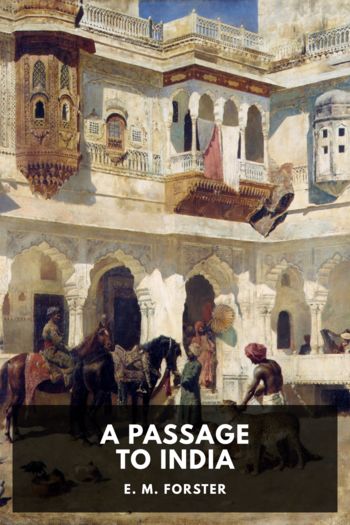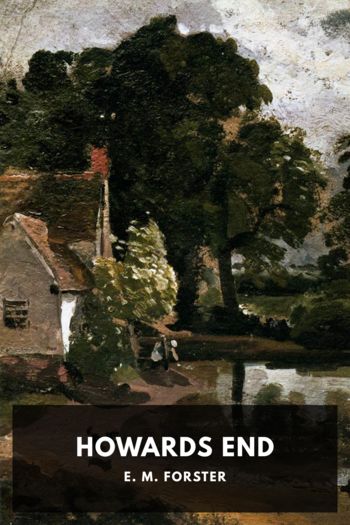A Passage to India by E. M. Forster (top novels to read .txt) 📕

Description
The setting of A Passage to India is the British Raj, at a time of racial tension heightened by the burgeoning Indian independence movement. Adela Quested, a young British subject, is visiting India to decide whether to marry a suitor who works there as a city magistrate. During her visit, a local physician, Aziz, is accused of assaulting her. His trial brings tensions between the British rulers and their Indian subjects to a head.
The novel is a complex exploration of colonialism, written at a time when the popular portrayal of the Indian continent was of mystery and savagery. Forster humanized the Indian people for his at-home British audience, highlighting the damage that colonialism caused not just to interpersonal relationships, but to society at large. On the other hand, some modern scholars view the failure of the human relationships in the book as suggesting a fundamental “otherness” between the two cultures: a gulf across which the disparate cultures can only see each other’s shadows. In any case, the novel generated—and continues to generate—an abundant amount of critical analysis.
A Passage to India is the last novel Forster published in his lifetime, and it frequently appears in “best-of” lists of literature: The Modern Library selected it as one of its 100 great works of the 20th century, Time magazine included it in its “All Time 100 Novels” list, and it won the 1924 James Tait Black Memorial Prize for fiction.
Read free book «A Passage to India by E. M. Forster (top novels to read .txt) 📕» - read online or download for free at americanlibrarybooks.com
- Author: E. M. Forster
Read book online «A Passage to India by E. M. Forster (top novels to read .txt) 📕». Author - E. M. Forster
By E. M. Forster.
Table of Contents Titlepage Imprint Dedication A Passage to India Part I: Mosque I II III IV V VI VII VIII IX X XI Part II: Caves XII XIII XIV XV XVI XVII XVIII XIX XX XXI XXII XXIII XXIV XXV XXVI XXVII XXVIII XXIX XXX XXXI XXXII Part III: Temple XXXIII XXXIV XXXV XXXVI XXXVII Colophon Uncopyright ImprintThis ebook is the product of many hours of hard work by volunteers for Standard Ebooks, and builds on the hard work of other literature lovers made possible by the public domain.
This particular ebook is based on a transcription produced for Project Gutenberg and on digital scans available at the HathiTrust Digital Library.
The writing and artwork within are believed to be in the U.S. public domain, and Standard Ebooks releases this ebook edition under the terms in the CC0 1.0 Universal Public Domain Dedication. For full license information, see the Uncopyright at the end of this ebook.
Standard Ebooks is a volunteer-driven project that produces ebook editions of public domain literature using modern typography, technology, and editorial standards, and distributes them free of cost. You can download this and other ebooks carefully produced for true book lovers at standardebooks.org.
To
Syed Ross Masood
and to the seventeen years of our friendship
Except for the Marabar Caves—and they are twenty miles off—the city of Chandrapore presents nothing extraordinary. Edged rather than washed by the river Ganges, it trails for a couple of miles along the bank, scarcely distinguishable from the rubbish it deposits so freely. There are no bathing-steps on the river front, as the Ganges happens not to be holy here; indeed there is no river front, and bazaars shut out the wide and shifting panorama of the stream. The streets are mean, the temples ineffective, and though a few fine houses exist they are hidden away in gardens or down alleys whose filth deters all but the invited guest. Chandrapore was never large or beautiful, but two hundred years ago it lay on the road between Upper India, then imperial, and the sea, and the fine houses date from that period. The zest for decoration stopped in the eighteenth century, nor was it ever democratic. There is no painting and scarcely any carving in the bazaars. The very wood seems made of mud, the inhabitants of mud moving. So abased, so monotonous is everything that meets the eye, that when the Ganges comes down it might be expected to wash the excrescence back into the soil. Houses do fall, people are drowned and left rotting, but the general outline of the town persists, swelling here, shrinking there, like some low but indestructible form of life.
Inland, the prospect alters. There is an oval Maidan, and a long sallow hospital. Houses belonging to Eurasians stand on the high ground by the railway station. Beyond the railway—which runs parallel to the river—the land sinks, then rises again rather steeply. On the second rise is laid out the little civil station, and viewed hence Chandrapore appears to be a totally different place. It is a city of gardens. It is no city, but a forest sparsely scattered with huts. It is a tropical pleasaunce washed by a noble river. The toddy palms and neem trees and mangoes and pepul that were hidden behind the bazaars now become visible and in their turn hide the bazaars. They rise from the gardens where ancient tanks nourish them, they burst out of stifling purlieus and unconsidered temples. Seeking, light and air, and endowed with more strength than man or his works, they soar above the lower deposit to greet one another with branches and beckoning leaves, and to build a city for the birds. Especially after the rains do they screen what passes below, but at all times, even when scorched or leafless, they glorify the city to the English people who inhabit the rise, so that newcomers cannot believe it to be as meagre as it is described, and have to be driven down to acquire disillusionment. As for the civil station itself, it provokes no emotion. It charms not, neither does it repel. It is sensibly planned, with a redbrick club on its brow, and farther back a grocer’s and a cemetery, and the bungalows are disposed along roads that intersect at right angles. It has nothing hideous in it, and only the view is beautiful; it shares nothing with the city except the overarching sky.
The sky too has its changes, but they are less marked than those of the vegetation and the river. Clouds map it up at times, but it is normally a dome of blending tints, and the main tint blue. By day the blue will pale down into white where it touches the white of the land, after sunset it has a new circumference—orange, melting upwards into tenderest purple. But the core of blue persists, and so it is by night. Then the stars hang like lamps from the immense vault. The distance between the vault and them is as nothing to the distance behind them, and that farther distance, though beyond colour, last freed itself from blue.
The sky settles everything—not only climates and seasons but when the earth shall be beautiful. By herself she can do little—only feeble outbursts of flowers. But when the sky chooses, glory can rain into the Chandrapore bazaars or a benediction pass from horizon to horizon. The sky can do this because it is





Comments (0)